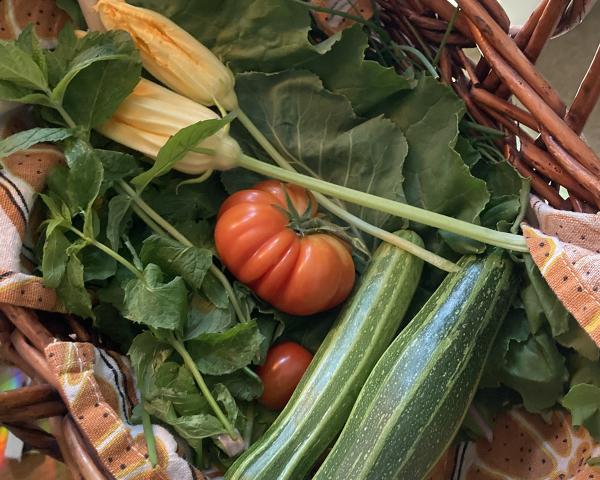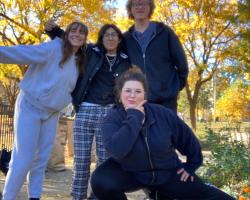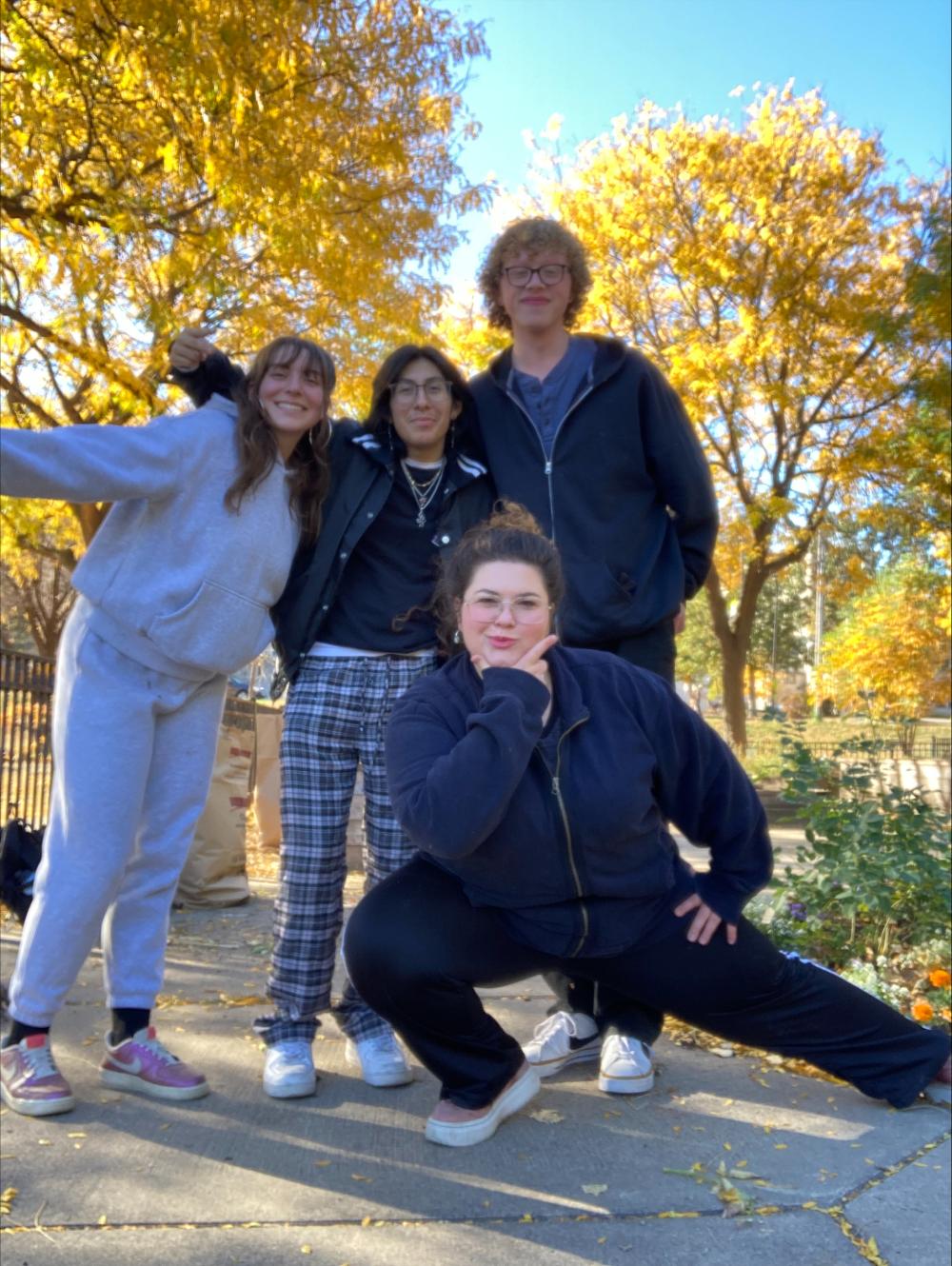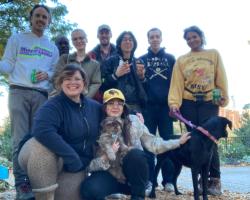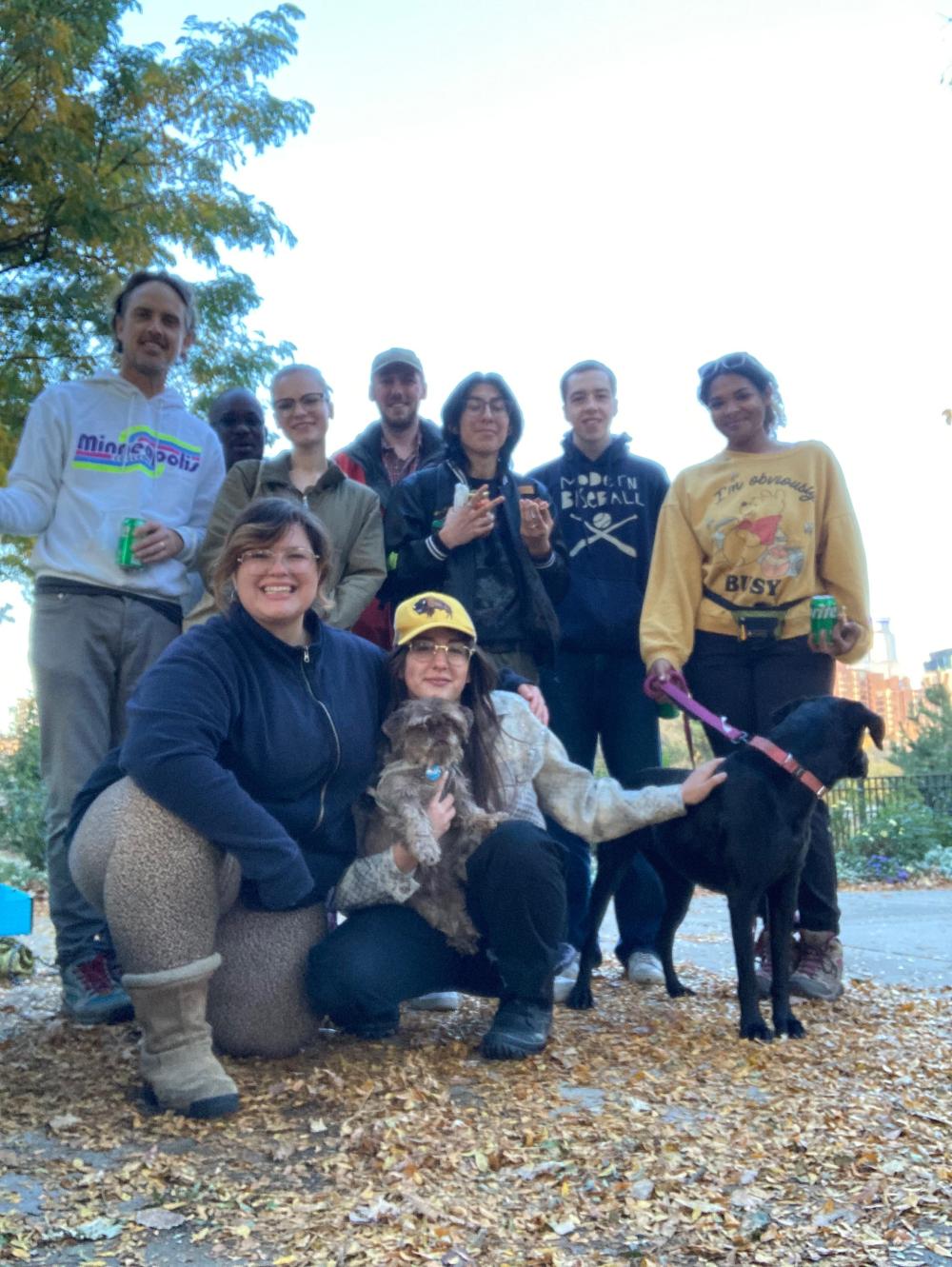Urban Farm Collective
The work of the students who are part of the Minneapolis College Urban Farm Collective student club is well under way. An array of crops including potatoes, squash, carrots, radishes, cucumbers, herbs, melons, corn, and peas are planted and will be harvested throughout the summer and fall. The end goal is to decrease food insecurities by donating more than 250 pounds of fresh produce to students, faculty, staff, and community members in need.
Urban Farm Collective leader Lisa Morff is awe-inspired by how environmental justice and community engagement brings people together through the club. “Everyone willingly puts their hands in the dirt for an important cause,” said Lisa Morff, who recognizes herself as just one organism living in the natural world. “We all live in the world and it’s important to give what you can. Our group has a symbiotic relationship with the earth and we recognize the important history of the land in which we farm.”
Honoring traditional practices by many Indigenous people of North America, the Collective is following the “Three Sisters” planting method which involves growing corn, beans, and squash together in a mutually beneficial way. “The companion planting technique enhances the growth and productivity of each crop,” said Morff. “The corn provides a sturdy stalk for the beans to climb, the beans fix nitrogen in the soil, enriching it for the corn and squash, and the large leaves of the squash provide ground cover, suppressing weeds and retaining moisture in the soil. Together, the practice regenerates the soil.”
“If you’re walking past our garden plots in Loring Park, you might spot our student gardeners planting seeds, pulling weeds, and harvesting crops,” said Morff, who is grateful with how the members step up to every task. “You might also spot Deet, the dog, chasing squirrels out of the garden. He’s our very own pest preventer!”
Morff is on the biology transfer pathway from Minneapolis College to the University of Minnesota with aspirations of medical school in her future. She has a vested interest in the work of the Urban Farm Collective, and is working hard with her team to develop a comprehensive transition plan so the Urban Farm Collective remains sustainable long into the future. Morff will begin an internship with LeadMN this fall, focusing on the work of the Urban Farm Collective and decreasing food insecurity, a cause she recognizes as important because many people are struggling to feed their families.
Urban Farm Meets Research Innovation
Minneapolis College students, alongside faculty and staff, are known for conducting innovative research to advance science, technology, engineering, and mathematics education. Expanding on her experience in the Urban Farm collective, Morff applied for and received an NSF STEM Grant to conduct research to learn to what extent utilizing the duckweed plants in Minneapolis Loring Pond for compost can benefit plant growth and nutrient uptake in produce while also being safe for human consumption.
“The research is a synthesis on sustainable inner-city agricultural practices with an emphasis on use of urban organic soil amendments," said Morff, who will spend more than 100 hours over three months this summer researching under the guidance of Minneapolis College biology instructor Nicholas Deacon.
“Once the compost is prepared, we will plant kale, spinach, and tomatoes in the garden plots, applying the duckweed compost to the beds. We will monitor plant growth by recording biomass, leaf health, and yield of crops harvested. The crops will subsequently be sent to the University of Minnesota for testing, collecting data that accurately reflects the chemical composition through elemental analysis and possible contaminants in the produce. Our key expected outcome is that duckweed compost is safe enough to use in sustainable inner-city agricultural practices.”
Morff is excited about how the research could positively enhance the work of the Urban Farm Collective, making use of nutrients from mother earth.
